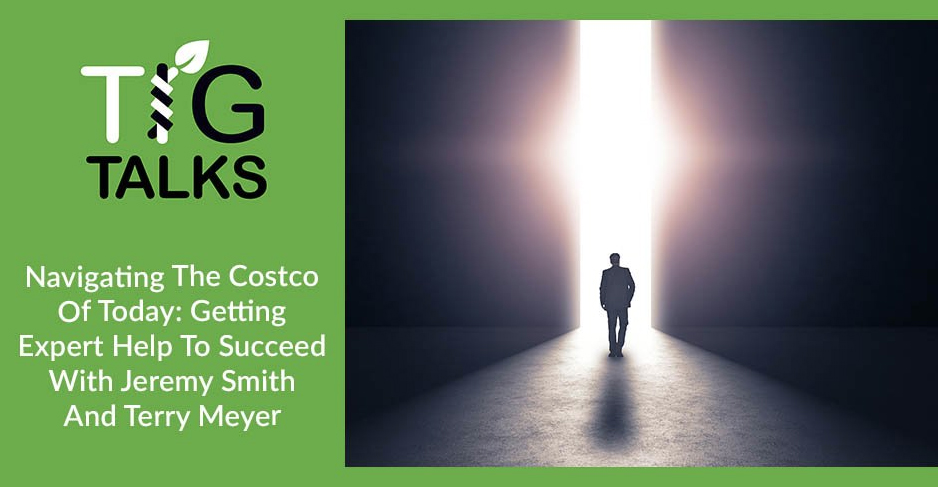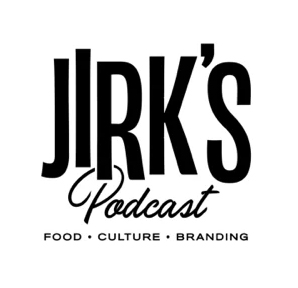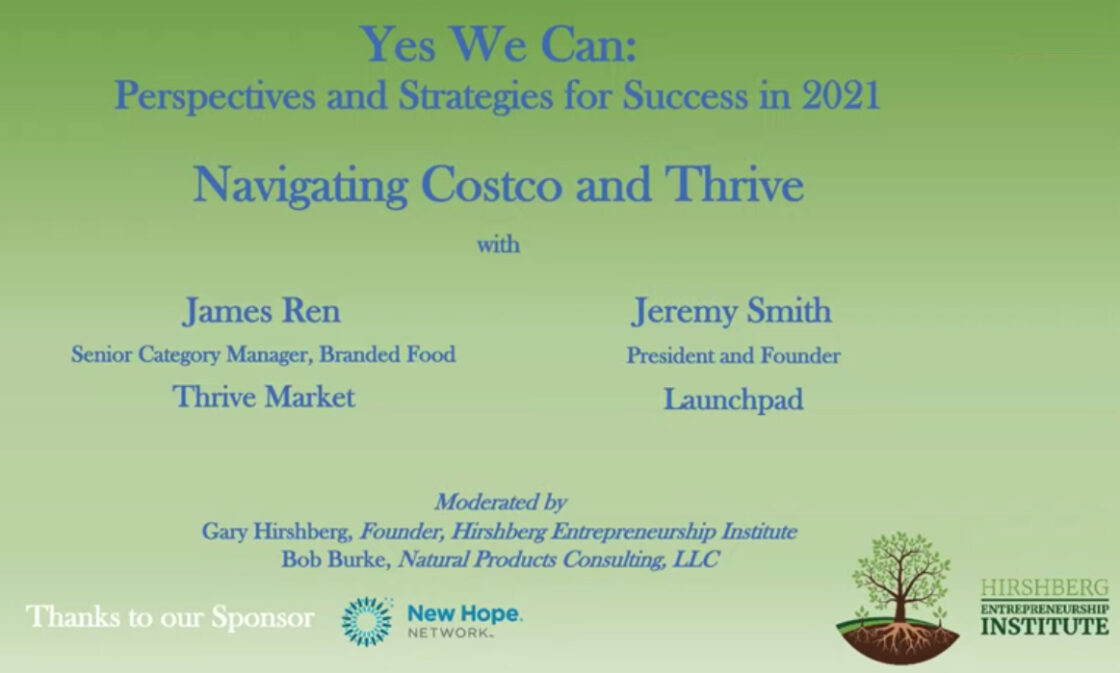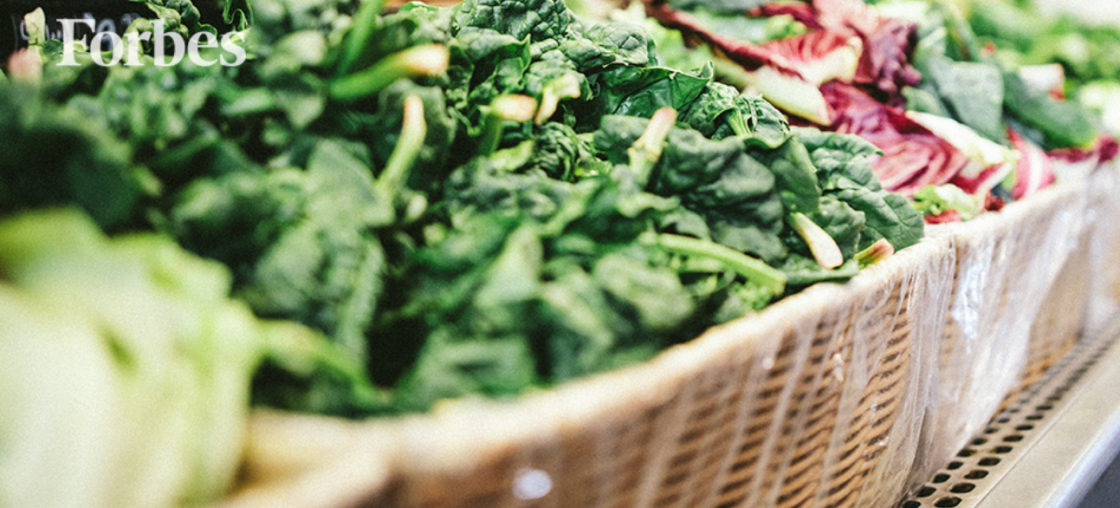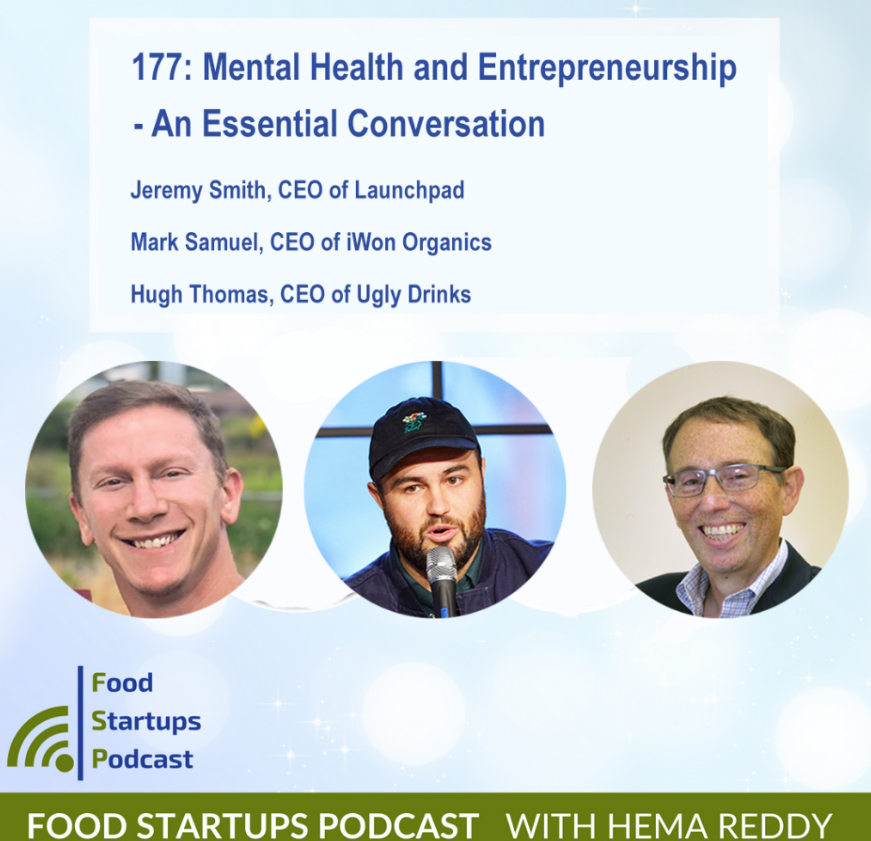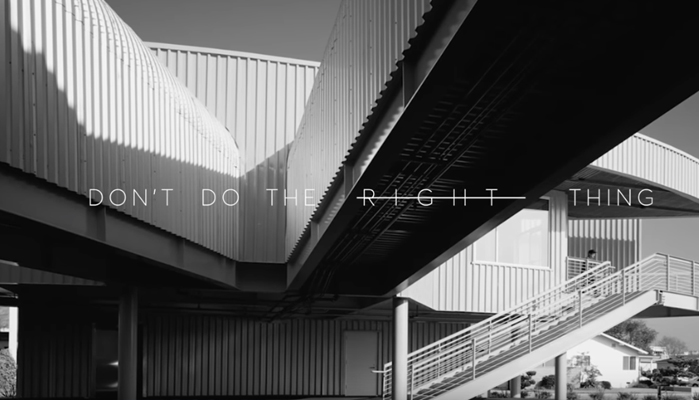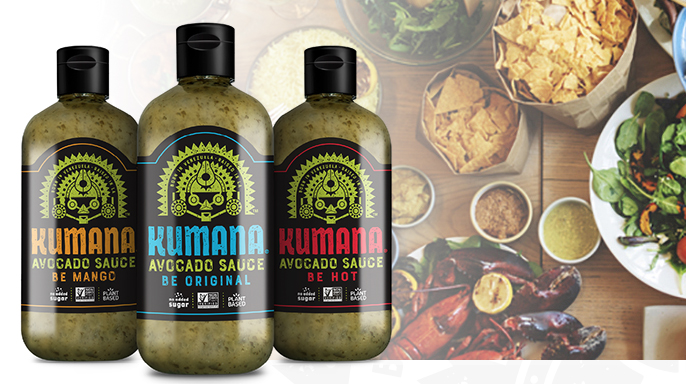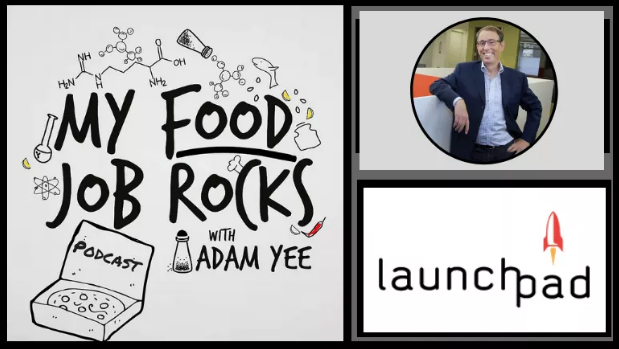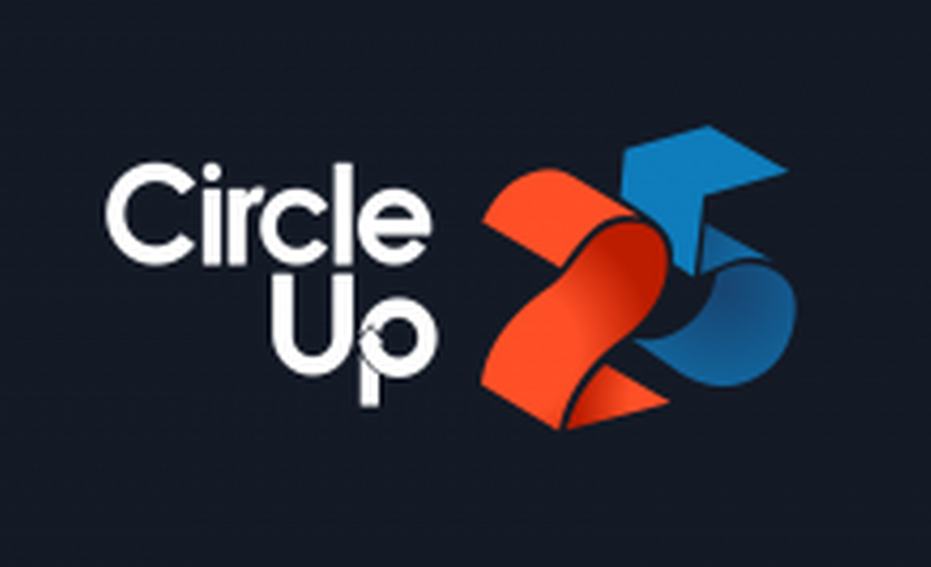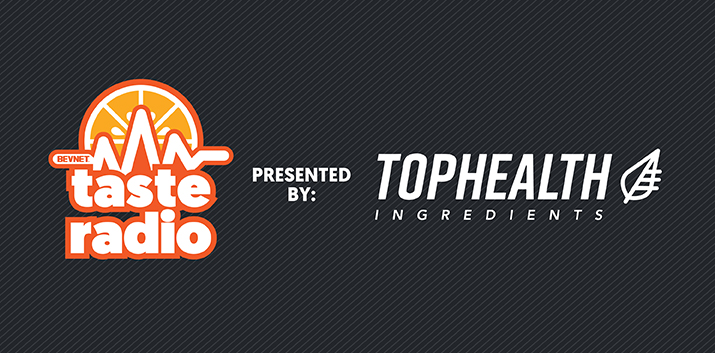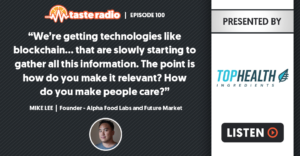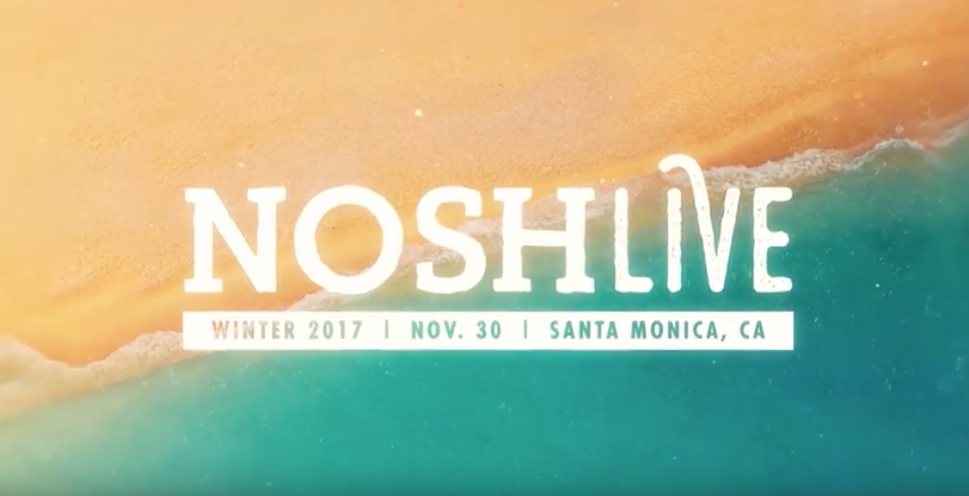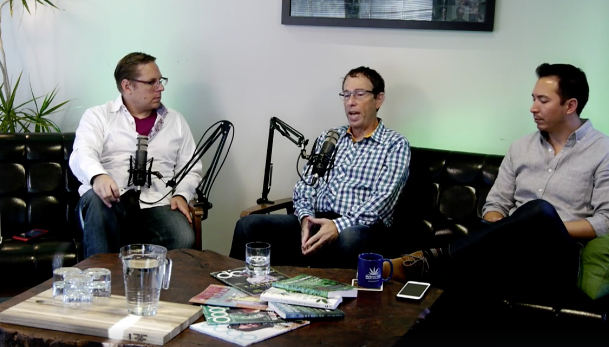What separates Costco from traditional grocers? The guests today are the OGs of the industry with much value in their pockets to share with everyone in this episode’s conversation. Jeremy Smith and Terry Meyer provide tips on navigating the Costco of today to generate sales and find an expert to help set the business to success. Jeremy explains how Costco is a value sale and why they focus on value at cost. Moving along the innovation chain, the early adopters of Costco helped the brand succeed in the market. Moreover, Terry advises you to buy what you need and build in an appropriate lead time. Tune in to this episode to gain more insights from Jeremy and Terry.
Navigating The Costco Of Today: Getting Expert Help To Succeed With Jeremy Smith And Terry Meyer
Cool conversation coming your way with two of the OG in the industry. We are going to spend a little time talking about sales and Costco and all kinds of stuff. Before I turn it over to Terry and Jeremy to introduce themselves and kick us off, there are a couple of things I want to call out. With our partnership with New Hope and the Natural Products Business School, we got a lot of workshops coming up. One was putting profit before growth and cash before everything. We have another one coming up on Founder Wellbeing. You can check it all out at NewHope.com or our website, www.TIGBrands.com. Come and participate because we’re talking about some important stuff.
The other thing I want to mention is that both these fine gentlemen joining us are part of our TIG Collective. This is an innovative way that we are unlocking the wisdom of this industry and putting it around young entrepreneurs and businesses in a meaningful way. You get 2 or 3 of these wise humans assigned to you to work with you on a biweekly basis in their knowledge and network. They help you strategize and think about how to grow the business. If you are interested in learning more about the TIG Collective, please reach out to us. That is it for my commercials. I’m going to kick it off and talk a little bit with each of you first and ask that you spend a second to introduce yourself and your background, then we’ll dive in. I will start with you, Terry.
Thanks, Elliot. I appreciate being here. When somebody calls me wise, it is followed by “guy” behind it, so I appreciate the brevity and the moniker. I’m the Vice President of Rhythm Superfoods. We manufacture and sell a host of vegetable and fruit snacks throughout the United States and different countries. I have been involved with that company for going on eight years. There is a lot of channel development. I have a fair amount of business with Costco, which is where I met Jeremy a few years ago. I’m proud to call him somebody that has given me a lot of advice, a trusted advisor and friend.
I have also served time in larger companies such as Unilever and Tropicana/Pepsi. I have seen a number of companies go through the sale process. We are working on some vibrant growth, new products, and a lot of innovation. We are trying to change and shift the landscape of small companies and natural foods. As all of us are seeing a lot of changes in the industry, this is an important conversation to have. Hopefully, I can add some color to it. The landscape in which you engage with Costco has certainly changed over the past couple of years. Along with that, there are a lot of things to talk about with Costco because there are a number of different ways to skin the cat. I’m happy to be here. I’m happy to help.
Thank you very much for taking the time. I appreciate your willingness. It is going to be an important conversation. There is a lot to cover here. Jeremy, the floor is yours.
Thank you. First of all, I’d like to say that I don’t skin cats, in case some of you were worried. We love cats and dogs. I just wanted to get that out of the way. I’m not associated with skinning cats. My name is Jeremy Smith. I’m the Founder of LaunchPad. I have been in the brokerage business for 24 years. I only focus on Costco. I could make a stab at saying something nice about Whole Foods, but I don’t know if it would be true. My entire life, for the very first 24 years of my career has been working with one retailer. It is nice because I don’t know how people like Terry and anyone else out there are able to deal with all the different buyers that have all the different cultures from all around the US.
I only have to deal with the world of Costco, which is crazy enough, but at least I can focus on one. I enjoy that, especially since I’m getting older. It is easier to deal with one vendor than to fly around to a whole bunch. I started a business in the design and advertising world. I spent half my life in that until I got into the brokerage business.
As Terry did point out, the Costco of today is not the Costco that most of your board members dealt with or may have sold to. Especially after the pandemic, there have been a lot of major changes in Costco in how buyers interact with vendors. Hopefully, we will talk a little about that because it is a completely different company in many ways. We also had a major shift when Jim Sinegal stepped down as the head of Costco, and Craig Jelinek took over. Costco has become much more of a private-label player with Kirkland Signature under Craig Jelinek than under Jim Sinegal. We are headed for a new president that will be announced. That’s it.
There is a lot to unpack for both of you, but let’s start with you, Terry. What has Costco meant for Rhythm? At what stage did you guys decide to make the jump into it? How did you know you were ready to do it?
We had started doing business with Costco on a small basis before I joined the company probably 9 or 10 years ago. It was around when kale chips became popular. It was the first and longest-running. We had dabbled in a few rotations. Costco has got an allure to it. If anyone in their company wants to generate some quick revenue and get their products out there, they go after Costco. Costco shows up at your trade show booth. You engage with Costco. I don’t know if you would have run after them into the building to try and do business right away, but we had the opportunity to do it.
It gave us some proof of concept in the natural products world. There were a lot of companies trying to get some traction outside of the regular popcorn and potato chips that seemed to dominate the Expo West floor twelve years ago. We made a concerted effort in it after we started to diversify our portfolio and got up into a range of revenue where Costco wouldn’t deliver us a body blow if they decided to do something and then not do something.
For us, Costco has been a great brand builder over the past few years. It was a fantastic outlet for us, especially during the pandemic because we had relationships. They were having problems with the supply chain, and we had a good relationship with them. We didn’t have problems with our supply chain. We had an item in virtually every region and the ability to give them as much as we could make, and they could take as much as we could give them. That is fantastic. It kept us alive during that time.
We made a few mistakes. Everybody makes mistakes. We deal with Costco because of the rapid escalation of sales that it can provide. We did that. We learned a few things. One of the things is you can never be too prepared to try and make money at Costco. When you think you can get by with 8 to 10 percentage points of contribution margin, that has changed. You need to be a little more cognizant of what Costco will do. If you make one mistake or err on one side, it can suck the profitability right out of it, but if you don’t, it can boost your sales and revenue. It can help and fund you to get to that next level in the life cycle of your company.
It meant a great deal to us in terms of being able to introduce a new product and scale quickly. Jeremy talks about all the other brochures in the world, the Whole Foods, the Krogers, and everybody else. We are launching a product going into Whole Foods. We are also taking the same item to Costco. We need 5,000 pounds to supply the first couple of vendors. For our first Costco rotation, we need 30 tons. There is a difference in the supply chain, what you have to do to prepare, and how you can negotiate with your vendors when something like that happens.
It is a fortunate event when the two things happen at the same time. It is an unfortunate event when it happens. It works well. The item you have fallen out of favor with a member. Something else comes in and kicks it out. If you get a distribution of an item, and all of a sudden, Costco stops ordering, it is a gut shot. People are ill-prepared for that eventuality. Even though Costco tells you how much of your business they want to be, Jeremy, you can back me up on this, but most people don’t pay attention to that. I don’t know if Costco pays attention to that after asking the initial question. It is great when it is boom time, but it is also frightening when it is bust. That is the thing that small companies have to consider.
I have a conversation with somebody. They said, “We like to make this Costco rotation successful even if we lose money.” They saw the shock on my face. They said, “What if we don’t fund it enough and it doesn’t work?” I was like, “What if you overfunded and it does? Think of what that means to your business if you are losing one percentage point on every bag that goes out the door, and they want a million bags. It is untenable.” It has been a masterclass in the supply chain, margin attainment, negotiating with vendors, trucking, film, and brokers. That is the high-level view.
That is why I didn’t add the guy after the wise. What you did was drop a lot of wisdom there. A question I ask a lot of our early entrepreneurs constantly when they are contemplating Costco is, “What if it works? Are you ready? Can the business absorb it? Will it be meaningful in the right way to the bottom line?” The second is, “What if they stop?” You can’t put yourself in a situation where you have so much concentration and they stop because they will put your business at risk. Jeremy, how does a brand evaluate if they are ready for a rotation? What should a brand do before they pick up the phone and come to you saying, “Would you consider helping us?” How do they know they’re ready to go?
I don’t think most early brands understand Costco well enough to make that decision. The smarter of all the brands are the ones that come and say to me, “Help me understand what I need to do to be ready for Costco.” There is a term I use called, “Are you prepared to move at the speed of Costco?” That is once you are approved as an item because they don’t always move quickly, although they have the ability to move quickly on an item.
One thing that separates Costco from traditional grocers is that Costco can be in and out of an item in four weeks if necessary if the item dies or the category changes or Costco changes. The first thing I tell clients is, “You’ve got to look at whether or not you have the margins in your product to effectively price your product so that you are competitive at Costco.”
Most retailers focus on value at retail. Costco focuses on value at cost, which is a formula that Costco created that is based on whatever your lowest price in the marketplace is, whether it is a distributor or you are selling directly to a retailer that you are offering must be 20% below that. If you were selling to KeHE for $10, you have to sell to Costco for $8.
That is the first place we start before we head into the supply chain. If you can’t get to those margins, then you are not going to be competitive at Costco because the member has to pay to get into the door. The member is in the hole the first day they buy a Costco membership. There has to be a value there. That is what Costco is. It is a value sale. I’m buying an item from Rhythm at Whole Foods, and Costco will carry 1 SKU or 2 SKUs. The member has to see that in this much larger format bag, there is enough value there. Otherwise, they are going to continue to buy it at Whole Foods because it doesn’t make sense.
The penalty for the consumer is they have to buy one flavor usually, and they have to buy a very large bag. It is a lot more products to go through. You have to understand some products are made to sell in high volumes like chips. Chips are good examples. Those are easy to move in 14 to 21 days. If you are going to be in there every day, you got to be able to move a pallet in 14 to 21 days in each warehouse that you’re in. Some products, and you have to be honest with yourself, don’t move quickly enough. In some categories like sauces and spices, you might sell 1 or 2 a week at Whole Foods. That is not going to make it at Costco. It is too slow on return on velocities. You are going to wind up with a 28-week supply at Costco.
You got to start looking at those things first. You got to then get through the plant audit, which Costco has probably the toughest plant audit of any retailer. For some companies, it is too early a stage in their first year or two because they don’t have the buying power with their co-packer or supplier of ingredients. They have to wait until they at least get to $1 million to $5 million in sales before they have enough juice in the game to get the type of discounts that are necessary.
As Terry pointed out, the last thing you want to do as an early-stage company is to take on a low-margin, high-volume business that sucks your margins out the door. If you are not prepared internally at this point, you might as well have taken that money and reinvested it in Whole Foods or expanded out into Erewhon, Sprouts, or some other market. Wait a year and then go forward with it. Sometimes companies are desperate. They want to get to their sales numbers quickly.
The last thing to understand is that Costco is loyal to only one group in its ecosystem, and that is the member. The member has all the power. Their goal is to service the needs of members, not you as a vendor. While they do treat vendors fairly, most of the time, their main commitment is to that member and making them happy. They will cancel an item at any time.
If you ever spend time talking to your friends that shop at Costco, they will tell you, “The thing I hate about Costco is my favorite chips or my favorite ice cream might be here tomorrow. I may walk in and it is gone.” Costco loves having that because it forces the member to feel like, “I better buy it today because it may not be here.” There is a sense of urgency. Just so that everyone understands, they don’t just cancel small vendors. Chobani was canceled for a while because Costco wanted to test other brands. Chobani was the number one yogurt SKU. It wasn’t that Chobani was underperforming. They were overperforming.
What’s different now is 15 or 16 years ago, Costco’s private label business, the Kirkland Signature label, was about 12% to 15% of their business. It is now approaching 30%. Craig Jelinek has talked about taking it up to 40%. Some of the threat isn’t your competitive set, but it is that they will bring in a larger vendor who can develop a Kirkland Signature item for them. The bar category has been disrupted. It used to be a lot like the chips, where there were a lot of rotations, but Costco does most of the business now in Kirkland’s Signature Bars versus Clif Bars. They own the category now. It doesn’t allow for a lot of the opportunities that used to be there ten years ago.
I will come to you, Terry, on this one. What do you do strategically specifically for Costco in terms of offering packs? What do you do to keep them interested in you?
We worked with Costco in the snack department for a while. Jeremy will tell you that for anybody that is in Department 12, which is the salty snack category, the threshold for success is much higher. We made a pivot to go after a different category where the threshold for success was much lower, but we still had the ability to sell what we were selling.
We started out strategically to offer Costco products that this department didn’t have a strong offering in. That was the first thing that we did that allowed us to have some success and some continued success once we made this pivot. The second thing we did was we got a lot of innovative items. The early adopters out there do shop in the Whole Foods and Sprout markets of the world. Some early adopters shop at Costco if the offering is right.
We took our focus and relied on trends and flavors that we knew had success. We did that with an item. We had tremendous success for a few years. It was on the short tails of a highly successful cauliflower category. We relied on some halo effects to give that item some validation. We worked with Costco on flavor.
One thing that I think Jeremy will support me on is if you work with a buyer at Costco, you work with a team of buyers. We routinely had access to the fruit and vegetable team, which doesn’t exist now because the buyers have all changed. We would sit in front of the fruit and veg team and we would have innovation sessions.
When the lead buyer, the food buyers, and the GMM lean into what you are working on, they got some skin in the game. They got their thoughts and desires in the item that you are producing for Costco. Sometimes that is not a benefit because the things they want to design don’t necessarily sell, but they got a lot of information on their side. They know what the trends are and what the members want. We kept buy-in from them as we moved along the innovation chain. That helped us get a lot of success over the past couple of years.
Even though an item went in and an item came out, the time is right for a lot of different things. It laid the framework for us to be the innovators in the category. That kept the relationship solid because even though an item stopped performing, the whole growth thesis behind vegetable snacks is still solid. It has been proven solid. It takes a little reinvention every while. It takes some innovation and smart people in the room to figure out how that fits into Costco. We relied on them as much as they relied on us to come up with items that fit the strategy. Tactically, we could move forward and have success or have the best chance for success.
The most unnerving seven days for any manufacturer is that first week when the product is on the floor because you see what is going to happen. You can have $800 a week on an item because people are interested in it, but it is the second and third weeks when people repeat their purchases, that tell you if an item is going to be successful. Those first couple of weeks is where the proof of the pudding is.
We have a question from Darren, “We hear a bit more about roadshows versus rotations and the pros and cons of those for early-stage companies.” Jeremy, I will come to you for that one.
I will tell you right off the bat that I am against doing roadshows for early-stage companies. They are expensive. No one makes money off of them. They are better for well-established brands because if you want to test different SKUs, it gives you some ability to do that. For early-stage brands, it is important to understand what the value of a roadshow is. What is it that the buyer doesn’t see in your brand at that moment that is requiring them to ask to do a pretest? That is what a roadshow is. It is a pretest of the items to see how they fall in.
Sometimes, when you are early on, one of the downsides to going to Costco early on is you don’t have enough data to support what your number 1, 2, or 3 flavor is. You have limited data. You got to have data from all over the country when you are calling on the Costco region. Certain flavors do well in certain regions, and others don’t perform as well. It is always important to know more than the buyer does about the actual category and your brand. Some early-stage brands haven’t built up the data internally yet to understand that.
I’m not going to mention their names, but they know who they are at Costco, but there are some buyers that do roadshows for the sake of roadshows. You don’t want to do that because you get a make sure you get a commitment, or if you are working with a broker and your broker doesn’t come to you with a commitment for the dollar amount of sales that you surpass at a roadshow, they will bring the item in. Ninety percent of the time, they won’t bring the item in after a roadshow unless it blows away the category.
You generally lose about $2,000 to $6,000 on the average road show if it’s a 4-day show or you are doing 5 or 6 roadshows. Costco loves roadshows because its members love roadshows. You have to think about what it is that you want to get out of this. Do you want to get a rotation out of this? Do you want to get an everyday item, and the odds of getting an everyday item at Costco are less than 1%, according to the data that we have created for brands that go into Costco? On LinkedIn, you will see a lot of brands that are in Costco. A lot of times, they are doing roadshows. The items never go in as regular items.
One part of your question was about rotations. That is where the supply chain comes in. Some vendors will complain, “I got a 52-pallet order from Costco. I’m excited about that. I did a total of 8 to 12-week rotation, but what is going to happen the rest of the year?” There is no guarantee when you are on rotation that you are going to get another item in no matter how well you do.
Rotations can drive a company crazy if they don’t have their supply chain set up with the right volume because you have to gear up for the increase in sales with no idea if you are going to get any more. The reality is that you have about a 5% to 6% chance of getting a second rotation, depending on the category. You also have to understand, whether it is a rotation or a roadshow, what the thresholds are for sales in each category, particularly the category that you are in.
For example, 15 or 16 years ago, the average yogurt SKU did $800 to $1,500 a week. Chobani came in and did $6,000 a week and was outselling cigarettes, eggs, and milk at Costco. It changed the category completely. Greek yogurt disrupted the whole yogurt category at Costco. Today, a brand that goes in might have to do $2,000 to $3,000 a week in sales, whether they are on a rotation or they are an everyday item, to be even considered to be on the shelf at Costco. You got to know and understand those things before you make your final decision on whether or not to do the roadshow or not, or try and go after a rotation.
I will add one thing to that too. The young brands also have to make sure that they understand the cash implications of saying yes to a rotation because you are going to produce a lot of inventory. That inventory is going to necessitate you to buy a lot of packaging ahead of time. You are tying up a lot of cash for likely not a lot of margin. That cash is cash that you can’t spend on other elements of your business. You have to be mindful and prepared from a funding perspective as well.
The other issue is that Costco sold CDS, which is the demo company, to Advantage Sales and Marketing. Advantage Sales and Marketing have been very tight with giving credit to younger brands. You might have to pay, let’s say demos cost $32,000. On top of you taking care of your co-packer, or if you have your own plat, your ingredients, suppliers, and then your MasterCard, and all those other costs, you might have to lay out $30,000 to $40,000 before your item hits the shelf just to pay for the demos. If you don’t have that much cash on hand to do that, you are going to find yourself in a rough position. I had that happen with a client that wasn’t able to pay for the demos. The buyer was furious. Now, they can’t get back into Costco because they haven’t paid their demo bill.
From the manufacturer’s side, something that people tend to downplay the significance of is if Costco makes a commitment, that is a commitment only for what they had given you for quantities. For those of you that are not familiar with buy docs, that is the paperwork that you submit to Costco. That is their bible. That is what they rely on for all their data. There is a spot on there that says, “Lead time for reorders.” If Costco wants three truckloads and you sell three truckloads, that is fantastic. That is a success.
Costco wants three truckloads. They come back in the first week and say, “It is doing well. We want to order another two.” You said that your reorder time is four weeks. You load them up on inventory, and you would sell the same amount. That cannot be a success. What companies fall into the trap of doing is buying more packaging than they need for that original commitment.
If it takes you twelve weeks to get additional packaging, that should be your lead time for a reorder. I can’t tell you how many times I have seen companies sit on 100,000 bags or cartons because they anticipated having more rotations. They got a price break because they ordered 100,000 instead of the 36,000 they needed for a rotation. It is a lot more expensive to eat all of that additional film and packaging than it is to take a higher price with a lower commitment for a film to make sure that you are not left with that, trying to liquidate it somewhere. It is hard to liquidate club packaging. That is the reality in the world.
This is my opinion. My advice is to buy what you need and build in a lead time that is appropriate. If the item performs, it will come back. If you tell them they can’t have another truckload in four weeks to keep them stocked, they will plan another rotation. The likelihood of them walking away saying, “They couldn’t perform and get me an additional truck in four weeks,” is low. Your commitment is what you operate off of. It’s not hope.
That’s great advice. What about you, Jeremy?
One of the things, if you’re working with a broker, is you want to make sure that those types of commitments are clear with the buyer, they are in writing, and they have been accepted. If you don’t have that clarification, then you are on the hook. If Costco tells you that they are going to commit to 50,000, and the worst case scenario happens is it is doing $200 a week, and they got a 30 or 40-week supply of product on the shelf, they are going to mark it down. They are going to go through that product because they made the commitment to you.
Costco is generally incredibly honorable about making sure that they take care of the vendor if they made a commitment. I always advise our clients that when we fill out the buy docs, we put language on the buy docs that states 50,000 unit commitment reorder times are subject to having inventory on hand to fill the order. You have covered yourself in the event the buyer doesn’t pay attention or forgets about it. When they see that on the buy docs, there is an ICS, which is an Inventory Control Specialist. All that information on the buy docs gets put into the Costco ordering system so that everybody is aware of what the terms and requirements are.
Another point that I don’t want to belabor too much because this is a long topic is one of the things that you have to work with your broker on is setting the right terms. A lot of times, the brand will work with a buyer, and the buyer will ask for a spoils allowance. What should that spoils allowance be? A brand that has been outselling in the market for a longer period of time is going to know what its spoils are on average. If you don’t have that information, you are stuck guessing on it. It’s always better to go lower than higher because Costco will never give you the money back.
Those are all things you have to take into consideration when you are evaluating, which is why Costco can be a much slower process to get in because you are going to have to spend at least 90 days or more working on answering all of these questions with your broker to make sure that you have completely filled out that buy doc and the information is accurate. On the other hand, once you put all that in writing in there, Costco is going to hold you to do it. If you didn’t do it right, you are going to be stuck with what you put on the buy docs.
I’ve got two questions here. One, I will pitch to Terry for a bit more objectivity and a chance to give Jeremy some crap, which is always fun. The question is, do you need a broker to go into Costco?
As much as I would like to keep all the money for myself, at this stage, if you are a small company, the answer is without a doubt yes. The challenge is picking the right broker.
Can I add to that?
Yeah, please.
I’m going to surprise you now, Elliot. I don’t think you need a broker. What you need is an expert. What we introduced in January was a new service that allows us to consult with clients on how to get into Costco. We take them through the entire process. We are generally involved for 6 to 10 months on the project. We train their team, get them prepared, and help them through the entire process.
The only thing we don’t do is go to the meetings or call the buyers. That is under full-service brokerage. We have about nine clients that are going directly to Costco, and we just advise them. In the long term, that is going to be the future of the business because there are a lot of ineffective brokers out there. They do things the old way.
Access is an important word. If you have somebody that you can talk to that truly is a Costco expert, and you have the resources to hire somebody that has the time to call on Costco, it can be a cost-saving and a huge value to go that route. To be honest with you, and I have to admit this as a broker, in most cases, Costco would prefer not to deal with a broker. They prefer to deal with the vendor directly because most brokers cannot make certain decisions that Terry can make. If Terry is in a meeting, he can make a decision right on the spot, but a broker has to go back and check with the brand. That is why I said at the beginning of the conversation that a lot is changing at Costco. I do agree, in general, that Costco is such a specialized business that you either need a consultant expert or a broker to go in.
When I say you need the right one, there is some in place that you need an expert, first of all. A lot of companies don’t have. The reason that I would say yes is a lot of companies don’t have the resources to get somebody on a plane to visit every region, and they don’t have the knowledge. It is one thing to be able to make a decision in a meeting with a buyer. It is another thing to be in a position where you are asked to make a decision, and you are not prepared to make it, and you make the wrong one. Sometimes there is a benefit to having a broker walk out of a buyer meeting and let the clock run out a little bit so you can make an informed decision.
It is great to be able to say, “Let’s go the circle the wagons. We got a commitment. Yeah, I’ll do this.” Unless you have been doing business with Costco for a long time and know the business like that, few people are prepared to go into a meeting with a buyer and make split-second decisions on the life and death of their business. Oftentimes, you are not asked to, but I have been in meetings where I have gotten commitments. We walked out with virtually a purchase order in our hands. That can be frightening because you have to make those decisions. You are negotiating in good faith at the table. You go back, and your CFO looks at you and says, “The only way we can make this work is if we fire you.”
One of the old great sales tricks is to make sure you don’t ever show up to a sales meeting with the ultimate decision-maker. You want that plausible deniability. You are like, “I got to check. I got to run to do that.”
As you get bigger, you are able to handle the business, and you are got greater bandwidth, I agree with Jeremy. Costco would like to operate without the ecosystem of brokerage being supported. There are companies that like to pay people and feed them what they kill. Retainers and fees for consultation sometimes are not in the budget for a lot of companies. You get a broker. The only way I’m going to pay you is if you get me business. If we walk out and there is no business, you get on your own plane, get your own car, pay for your own gas, and you go home. I have spent $175 on Southwest, no harm, no foul.
As an earlier-stage brand, having somebody alongside you to help you avoid that mistake is worth its weight in gold. Giovanni with Little Gourmet asked, “Not even specific to Costco, but I’m curious to hear from both of you what you guys think makes a good broker. What would a good broker be doing for us other than opening the opportunity or the strategic door?”
It is a partner that is going to help you navigate the pitfalls of the business and stop you from making a mistake. It is getting meetings. If I want to attend every Costco meeting across the country along with my salesperson, sometimes it doesn’t work. Sometimes the buyer won’t see you because the broker has access but its contacts, and it is helping you navigate the landscape without making many mistakes. There is a certain amount of paperwork that it is nice not to have to pass by somebody else to make sure you are not making those mistakes.
I agree with what Terry said. Every broker gets asked this question by brands. It is the dumbest question to ask because you are never going to get the truth. The question is when you are talking to the broker, they will say, “Do you have good relationships with the buyers?” Every broker is going to say, “Yes, we got great relationships with the buyers. I advise clients, “The proof in the pudding of whether they are successful at Costco or not is what they have currently on the floor at Costco.” That is the only measure of success that matters the most because the buyer may like the broker, but they don’t buy from the broker. There is a big difference between the two.
The other thing is you can’t rely on your best buddy at another brand that is in a completely different category to tell you who the best broker is because that broker may not have experience in your category. You got to get somebody that understands your specific category. Too often, I get calls from brands that they were unsuccessful at Costco because they were using a frozen broker that knew nothing about the chip category. You want to have somebody who is well-balanced.
Another important point is we do a lot of rehearsing with our clients before we go to the meeting. We don’t want them to ever ask a question they don’t already know the answer to. You are much better off if you don’t know the answer, just not asking the question. You got to get a broker that listens. As with all salespeople, salespeople like to talk and hear themselves talk.
Listening is the key ingredient that you want in a salesperson. Many times in a meeting, there will be a moment where there is this question that is asked, and the buyer pauses and doesn’t say anything. The salesperson or the founder of the company gets uncomfortable in that moment of silence and speaks and saves the buyer from having to even answer the question.
Lastly, you want to make sure the buyer can present your item without a PowerPoint presentation. Too often, if you go into a meeting with a broker, you will see them make a presentation. It is like they are reading Green Eggs and Ham, although that would probably be a better read than most PowerPoints. It is important that they represent your values as well.
I had someone call me. This is a good timing point where they have been with a broker for a while. I said, “You are a terrible fit. I know that broker. They don’t think as you think. They don’t represent your brand the way that you do. They are an old-school broker.” You got to be looking at those things. When you interview a broker, you should have a list of questions. You drill them on and make sure you understand before you start interviewing brokers. What it is that you want to get out of this? How do you want them to represent your brand? That is important. There are questions you can ask that will expose the broker right away as to how they follow up.
From a broker’s perspective, I’m on the inside. I know that, in general, everyone loves new brands. It is like dating if you’re single, which I’m not anymore, in case my wife is tuning in to this. You have to understand that salespeople, in general, get lazy. If they are talking to a buyer, they got some other brand they also represent, and the buyer is interested in getting more SKUs from that brand, they may not do a good job at representing your brand. I’m surprised at how many brands don’t do this. You need to have regular calls, in the worst case scenario, once a month with your broker to review what they are doing. You should get copies of every meeting recap that they go to that you are not at. If they don’t provide them to you, don’t hire them.
That’s great advice from both of you. Also, talk to other brands that are using them, not the ones they tell you to, but the ones that reach out and talk to them. We have time for one last question. It comes from Paul, “In what increments can a brand launch and grow at Costco, city, state, region, or national? In other words, could I launch in Austin and across Texas, Arizona, Oklahoma, and Louisiana?”
Yes. One of the unique things about Costco, as large as a company as they are, their regional offices will allow you to go in and go into one warehouse. You are going to have much higher costs only going to one warehouse, but if all you have is the capacity and the buyer wants to bring it in, they may order 1 or 2 pallets for that building, but sometimes that is more than you will get out of a UNFI order going into a smaller retailer.
They will work with you as you grow. You always want to go into the region where you have the most distribution and brand recognition versus going into a region where no one knows who you are. Our data shows that if you go into a region with distribution versus one without one, you will see a difference in sales of 15% to 30%, depending on how much distribution you have in a particular region before you go into Costco.
We are out of time. We probably need to do a part two on this because there are a lot more questions. I got questions on things like regenerative organic, food tribes, and diversity programs. If you guys are up for it, we will look to find a time to do a part two. Before we sign off, I give you each an opportunity, starting with Terry, to leave your last-moment mic drop-type wisdom and share anything you like to share with the audience.
For Costco, be careful and try to make money. The house always has the odds, even in the best game at 51-49. Costco will allow you to be a partner with them. They are honorable, and it is an exciting business. If you have done business with Costco, one thing about it is it’s packed with adrenaline. Make sure you are ready.
Thank you. Jeremy?
Don’t be afraid to say no to Costco. I don’t mean no that you are not going into Costco, but you don’t have to always agree with what the buyer wants to do. I have had some of our biggest successes by saying, “No, we won’t create that item. It doesn’t make sense.” A lot of times, people are afraid to do that. They will respect you more in the end if you understand your category and your brand than they will if you disagree with everything that they say.
Sometimes a buyer will say, “I want your apricot flavor.” You know it is your twentieth worst-selling flavor on your list. You shouldn’t sell it to them because you are setting yourself up for failure. Remember, saying no at the right time for the right reasons make sense, and never do a deal that doesn’t make sense for your company.
If they want to have a chat with you and learn more about working with you, Jeremy, how best to do that?
Reach me on LinkedIn or go to our website at LaunchPadGroupUSA.com. I’m always around. No matter what questions you have, I will always be direct and honest. You might not like the answer, but I will give you my most honest answer.
I can vouch for Jeremy being honest and direct. It is always what you want to hear, but it is always what you need to hear. Thank you both for doing this. I am serious about scheduling a part two because there are a lot of questions remaining, and the conversation is worth having. If you are game, we will get you back. Thanks, everyone. Have a great day.
Important Links
- Terry Meyer – LinkedIn
- Jeremy Smith – LinkedIn
- New Hope
- Natural Products Business School
- TIG Collective
- Rhythm Superfoods
- LaunchPad

